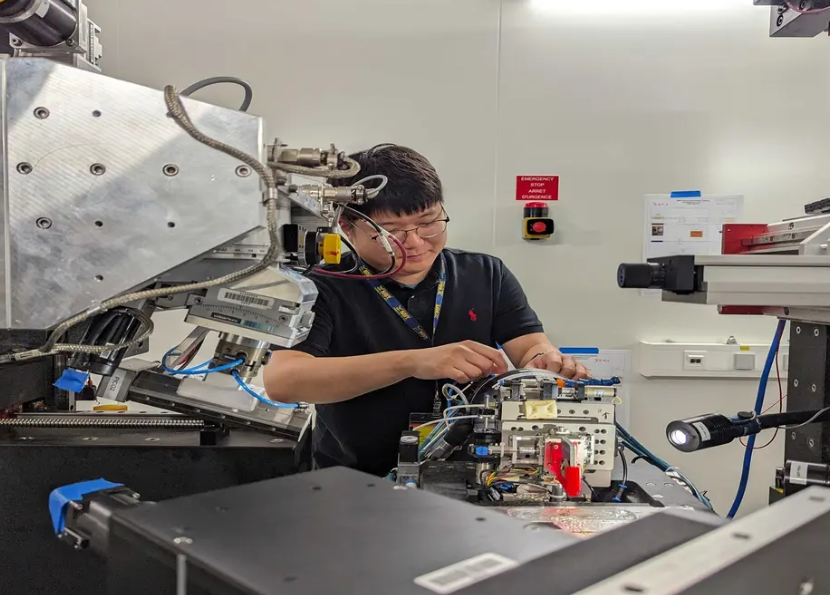University of Michigan's First 3D X-Ray View of Magnesium Alloy May Revolutionize Lightweight Car Design
Breakthroughs in materials science may help engineers design stronger, lighter, and more fuel-efficient cars. According to foreign media reports, researchers at the University of Michigan have used powerful X-rays to capture, for the first time, 3D views of the internal microstructure of lightweight magnesium alloys, revealing how they absorb stress without fracturing. This discovery paves the way for the broader application of magnesium in the automotive industry, potentially reducing costs and improving performance.

Image source: University of Michigan
This research, funded by the U.S. Department of Energy, provides new insights into the behavior of magnesium alloys under mechanical stress. Magnesium is 30% lighter than aluminum, and although some manufacturers have already used it for non-load-bearing parts, its wider application has been limited due to its unpredictable behavior under stress. Understanding and controlling this behavior could make magnesium a mainstream material in automotive manufacturing.
The crystal structure of each metal—an orderly, repeating arrangement of atoms—determines how it responds to tension or bending. Steel and aluminum have multiple slip systems, allowing atoms to move easily in any direction, enabling them to stretch without breaking. Magnesium's slip systems are limited, permitting atomic movement only in a few directions.
How magnesium alloys cope with stress
When a magnesium alloy is stretched along a direction that is not favorable for slip, "deformation twinning" occurs. These twinned regions are mirror-image areas formed when atoms in specific regions of the crystal structure undergo an orientation change. This is similar to folding a piece of paper so that one side is a mirror image of the other along the crease.
This twinning process can enhance ductility, allowing the material to stretch in more directions, but excessive twinning can produce defect clusters that eventually lead to cracks.
The team from the University of Michigan discovered in their experiments that these three types of twins are formed at the "triple junction" where three crystals meet, and defects always appear at the point where the twin is in contact with another crystal.
Ashley Bucsek, assistant professor of mechanical engineering and materials science, stated that this consistent behavior may be key to optimizing the service life of magnesium in high-demand applications. Before applying stress, the researchers used a small CT scanner to scan the samples and map the grain orientations. They then selected a grain with an ideal position to track the twinning process.
X-ray imaging applications
To capture these changes with unprecedented detail, the research team used the European Synchrotron Radiation Facility located in France. Its high-energy X-rays enabled scientists to image selected grains without damaging the samples.
They used a technique called dark-field X-ray microscopy, which can filter and amplify X-rays diffracted at specific angles associated with the target grain.
The samples were subjected to tensile tests under three different loads—0.6, 30, and 45 MPa—which are typical tensile forces for automotive components.
Between each loading, the researchers imaged the grains, effectively observing the formation and evolution of twin domains in real space.
These high-resolution images are a first step towards improving the ductility and stability of magnesium alloys, bringing them closer to large-scale applications in cars and other vehicles. Researchers plan to capture these changes in real-time in future experiments.
【Copyright and Disclaimer】The above information is collected and organized by PlastMatch. The copyright belongs to the original author. This article is reprinted for the purpose of providing more information, and it does not imply that PlastMatch endorses the views expressed in the article or guarantees its accuracy. If there are any errors in the source attribution or if your legitimate rights have been infringed, please contact us, and we will promptly correct or remove the content. If other media, websites, or individuals use the aforementioned content, they must clearly indicate the original source and origin of the work and assume legal responsibility on their own.
Most Popular
-

EVA Morning Prices on September 12: Most of the Market Holds Steady, Highest Rise of 50 Yuan
-

[PET Weekly Outlook] Polyester Bottle Chips Expected to Oscillate and Warm Up with Costs Today
-

List Released! Mexico Announces 50% Tariff On 1,371 China Product Categories
-

EU Changes ELV Regulation Again: Recycled Plastic Content Dispute and Exclusion of Bio-Based Plastics
-

Case Study | Clariant AddWorks™ Additives Solve Plastic Yellowing Problem






